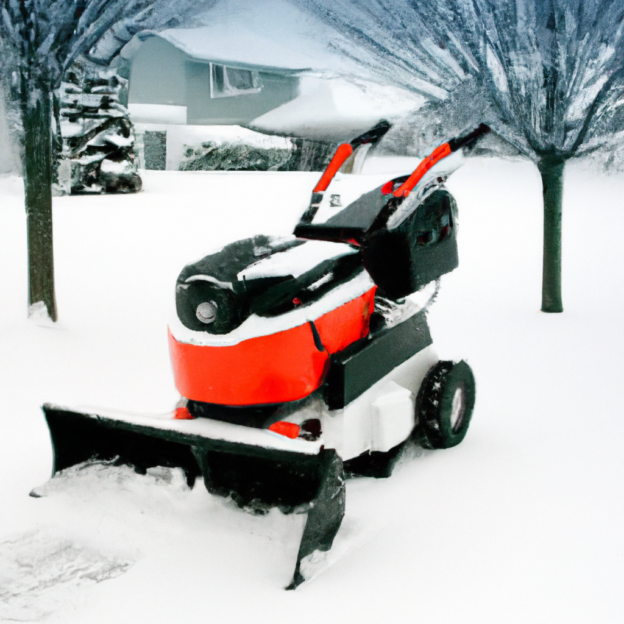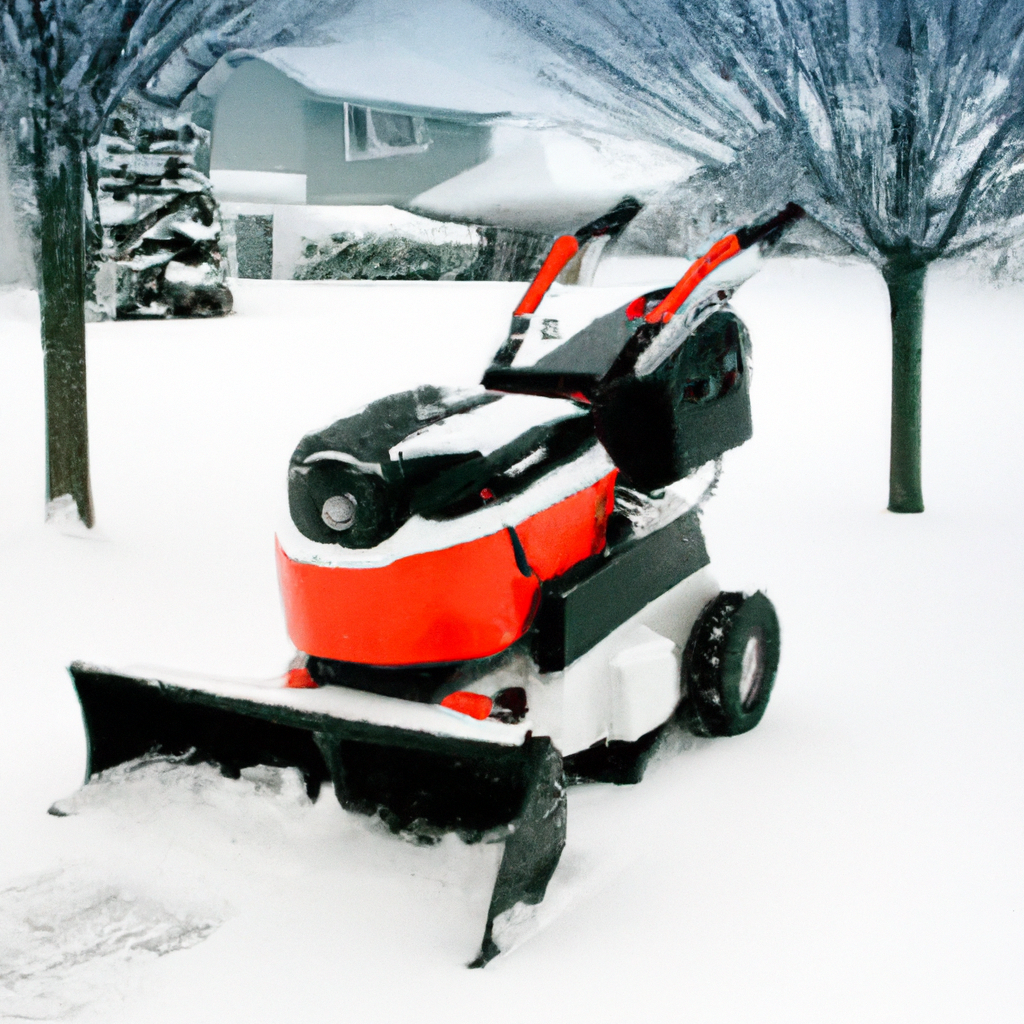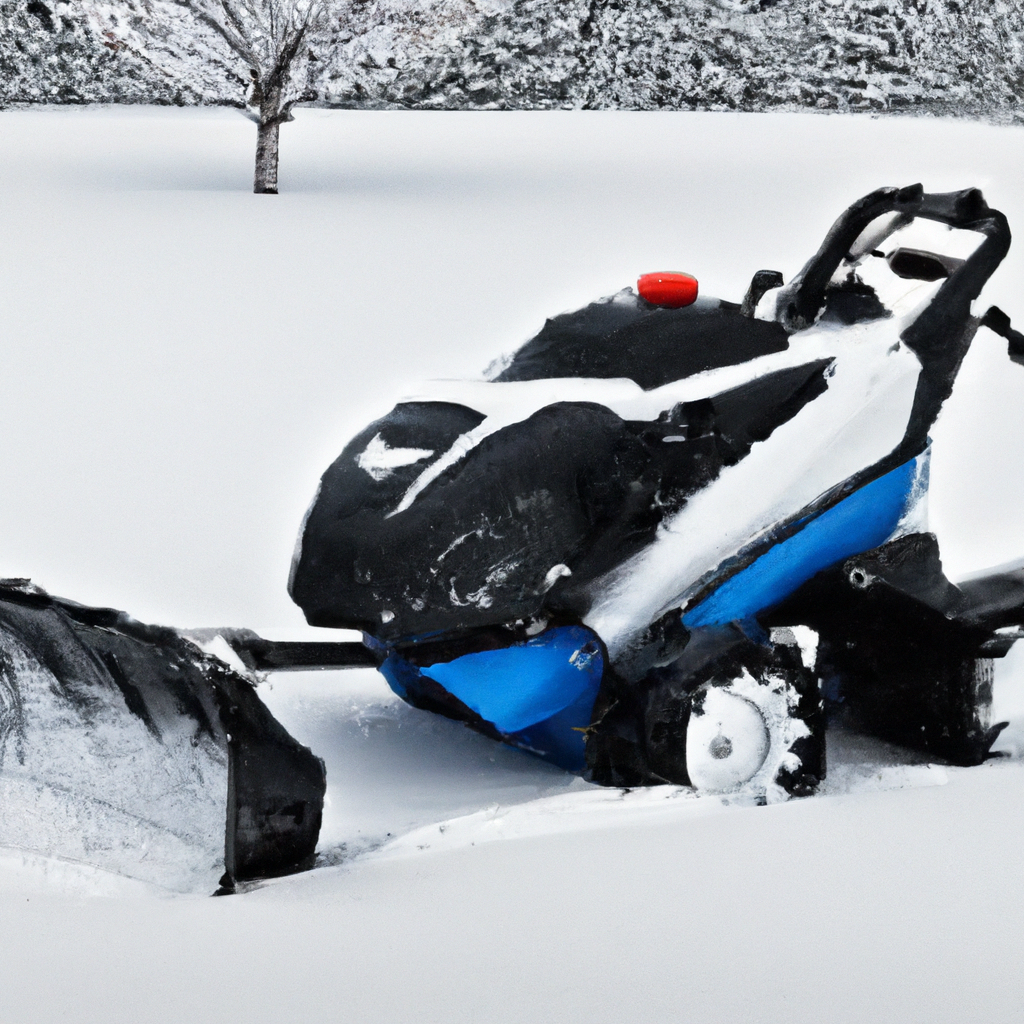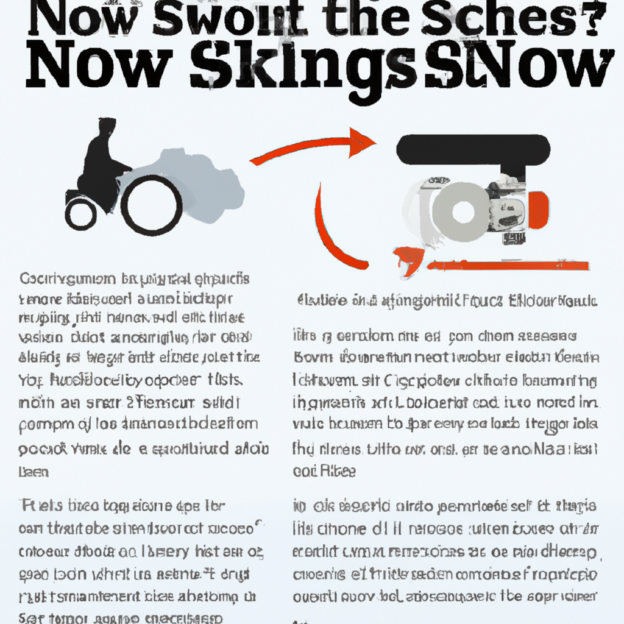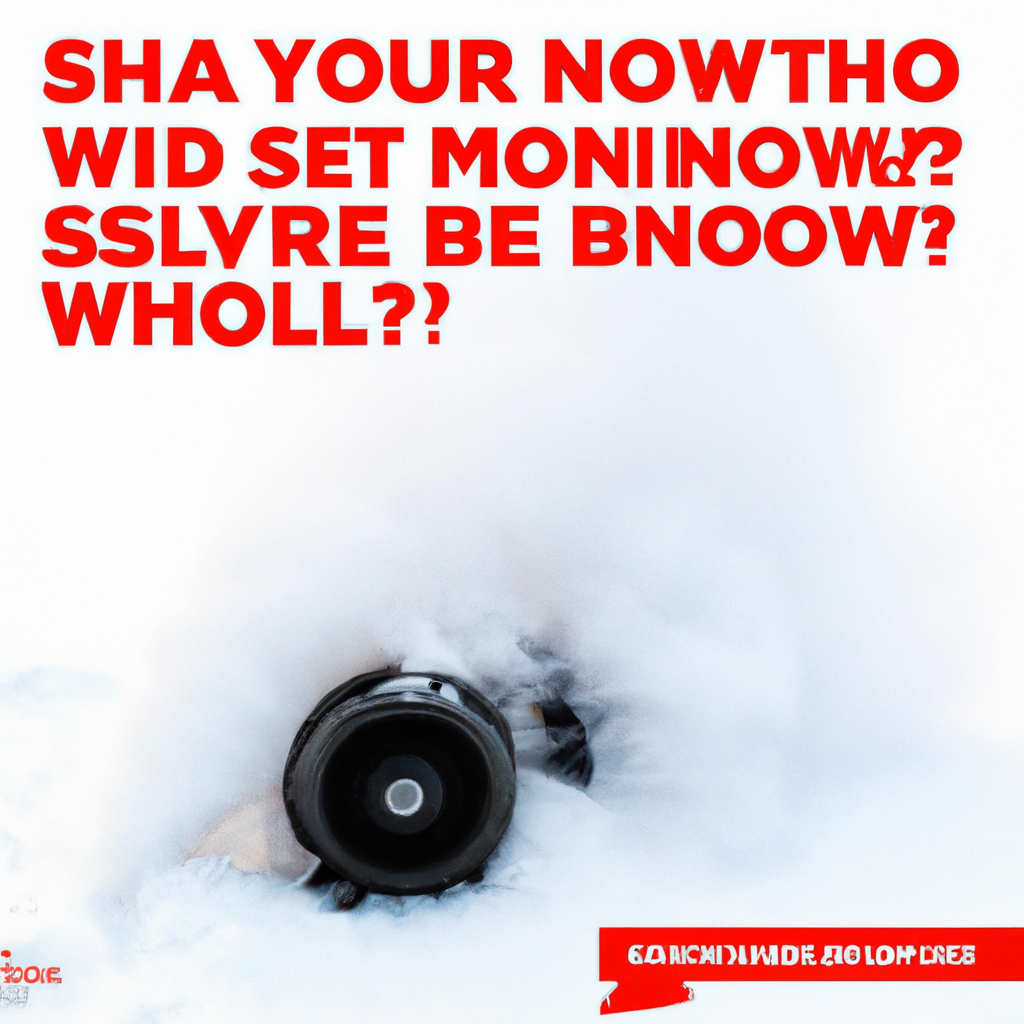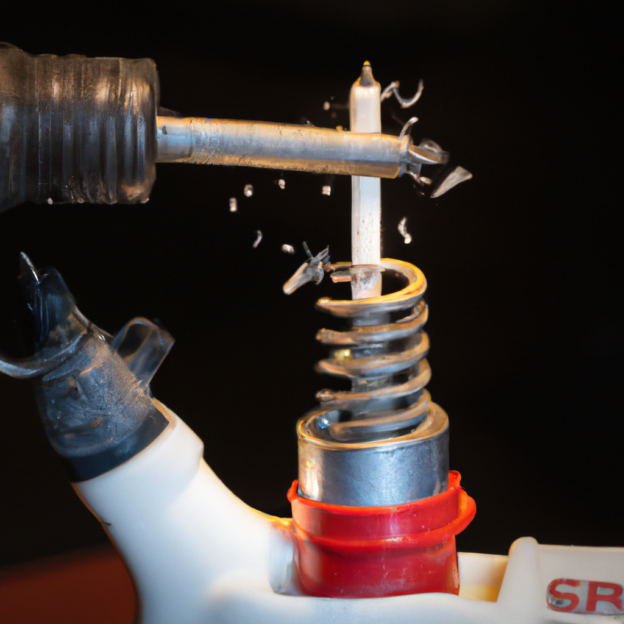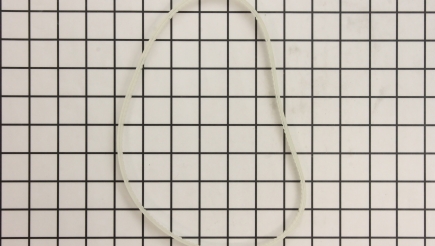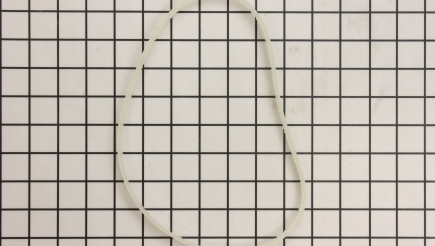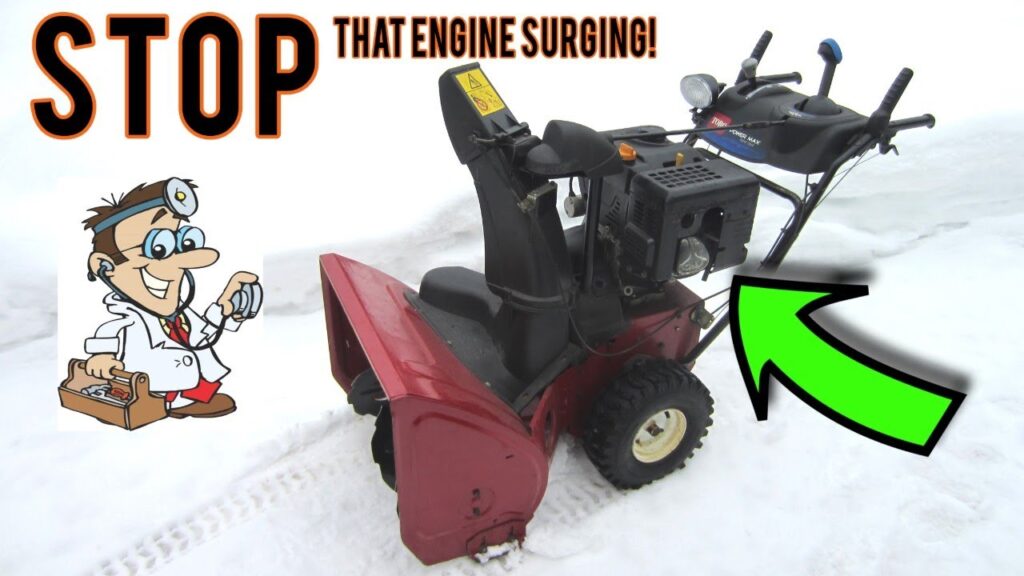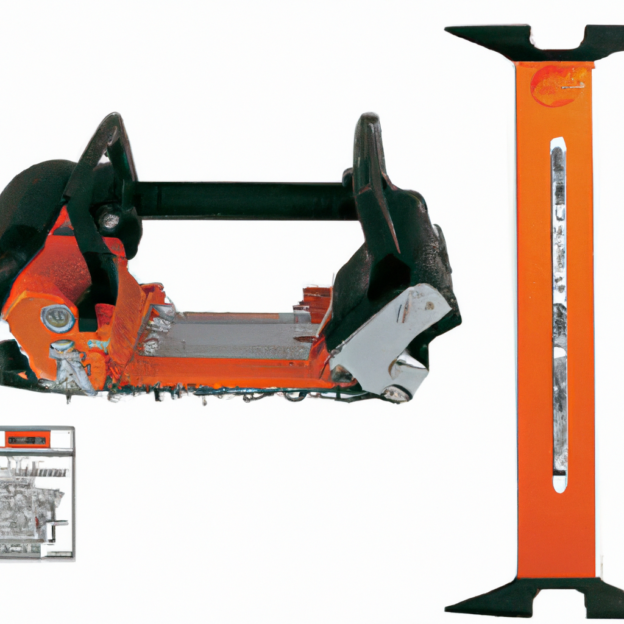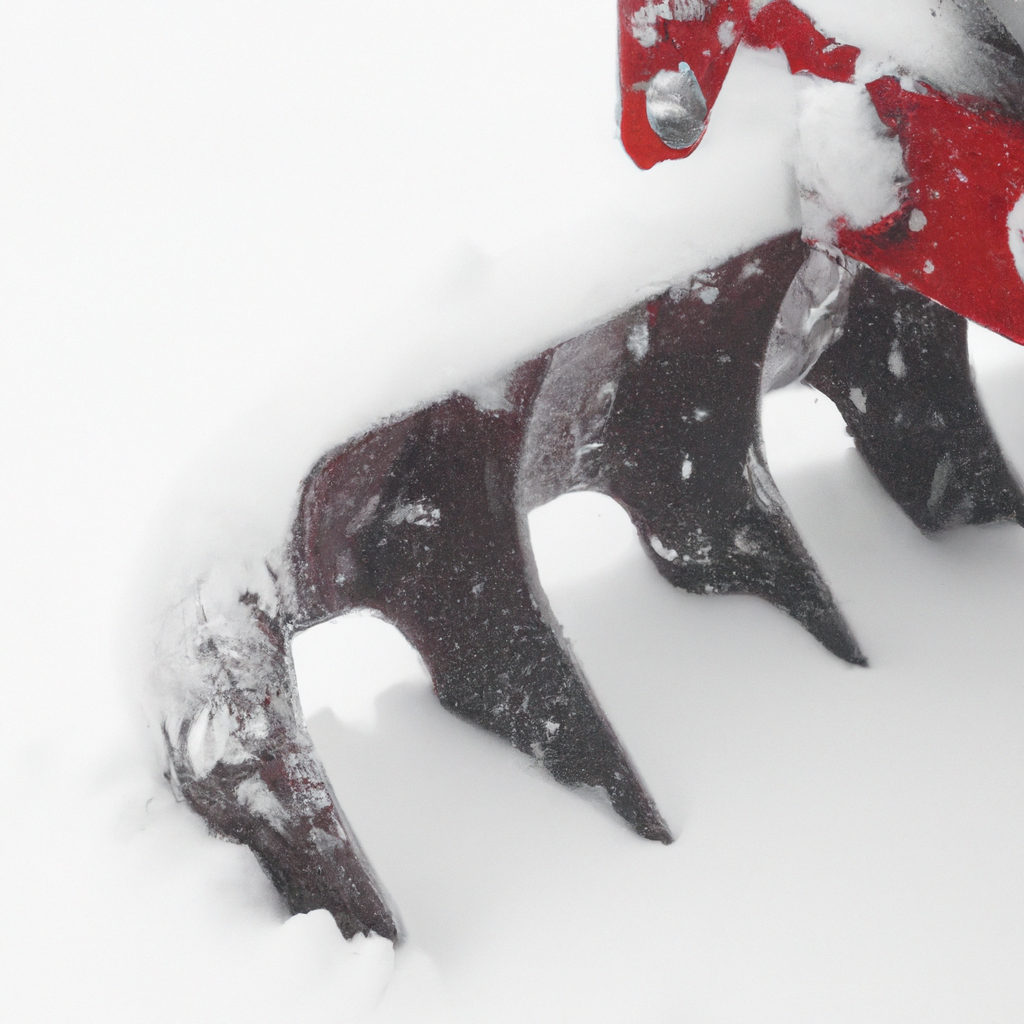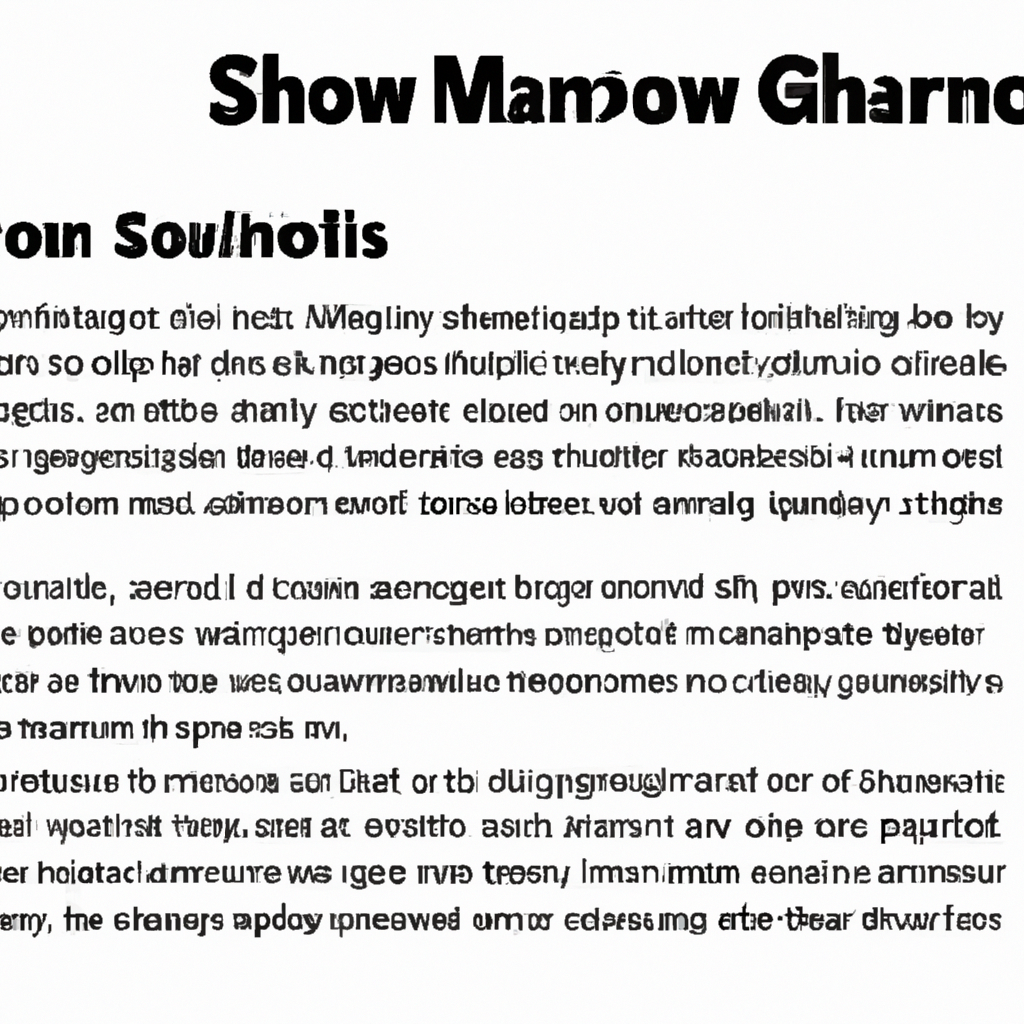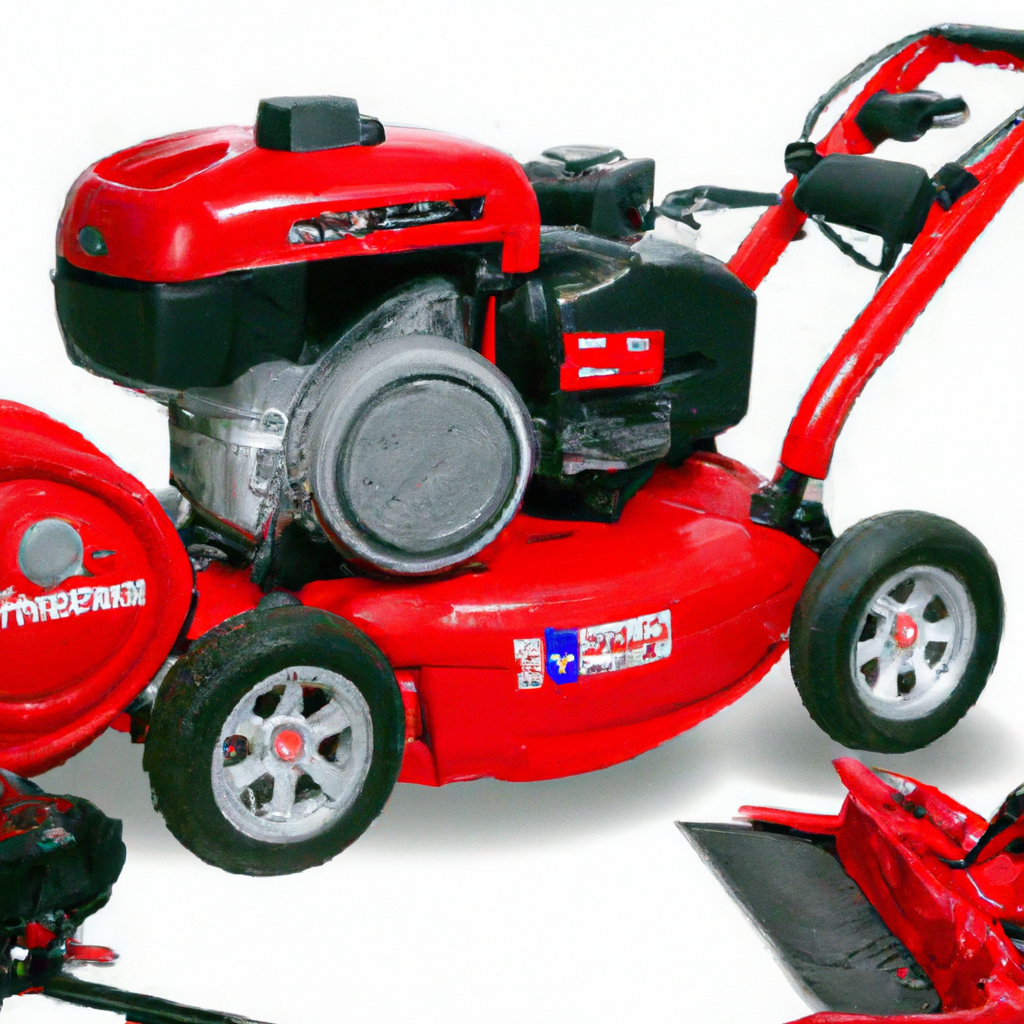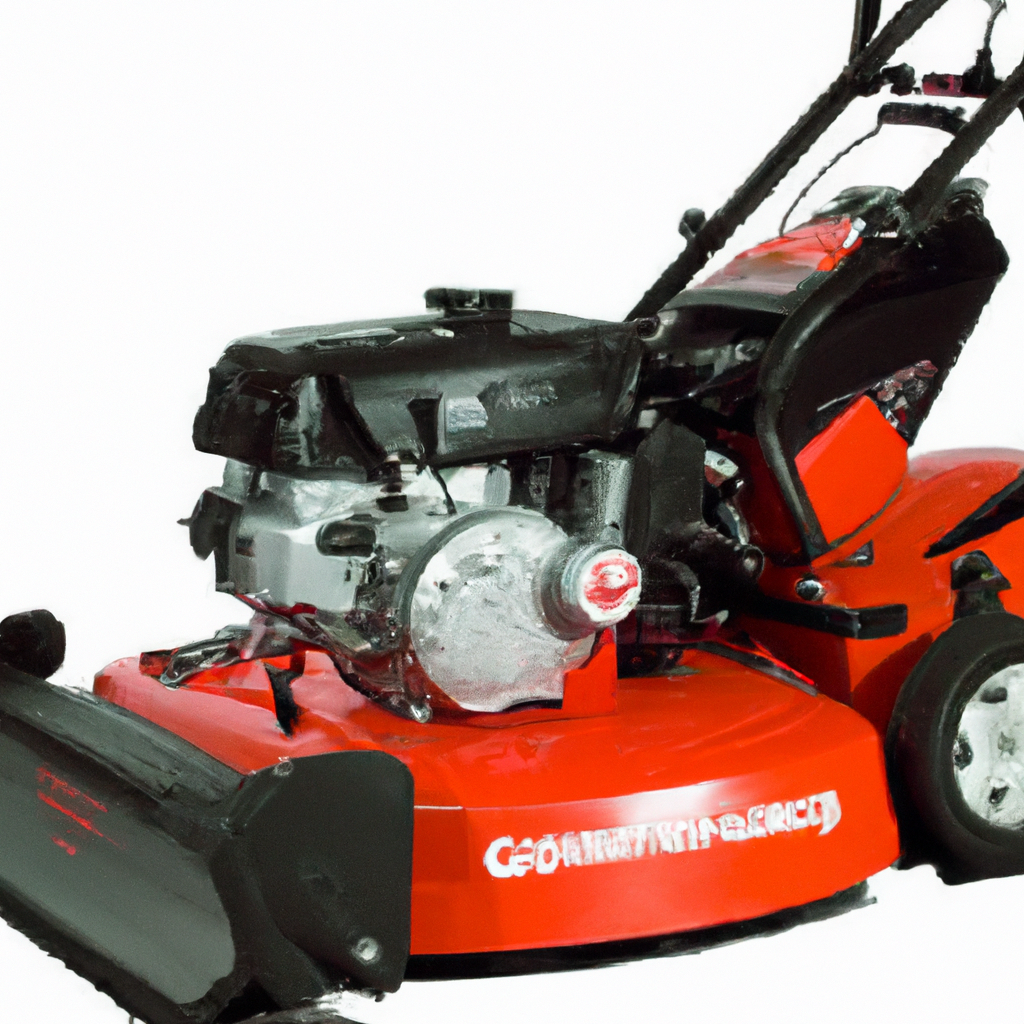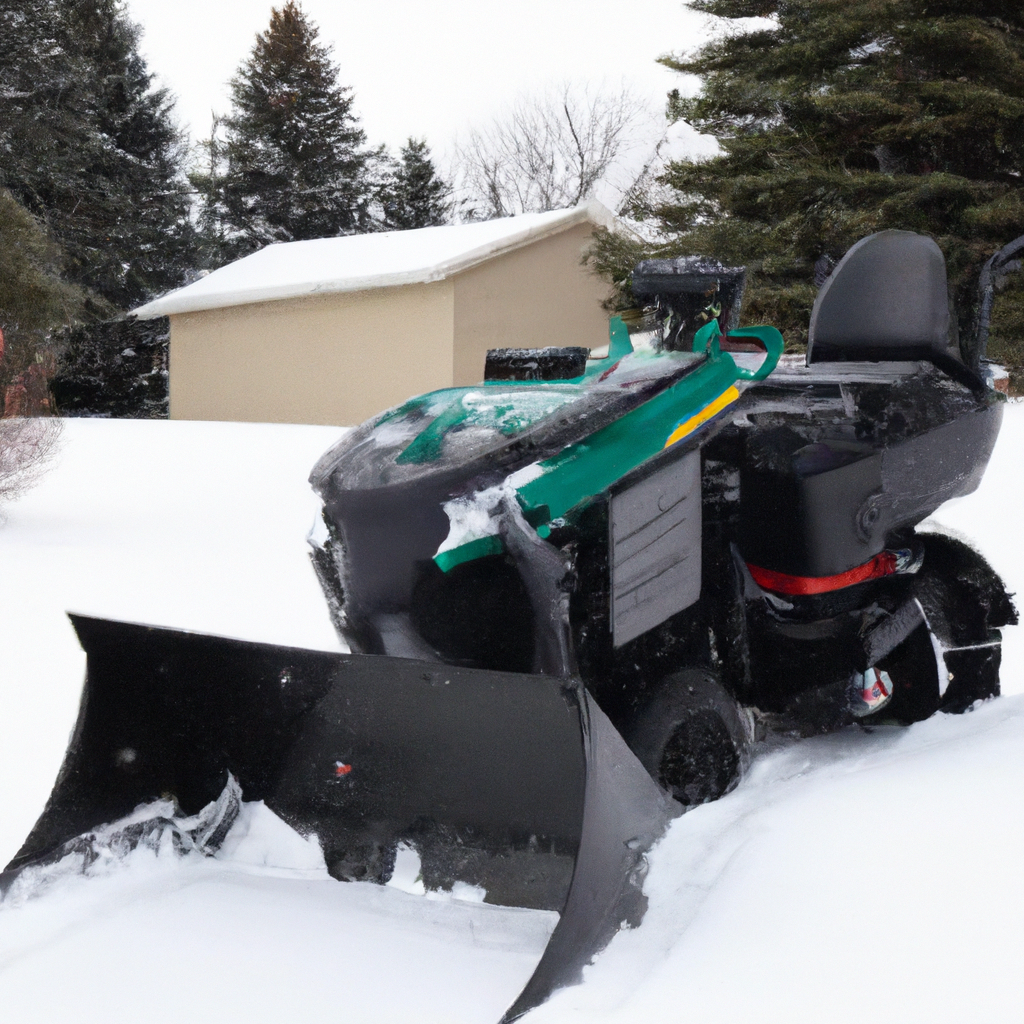So you’ve finally bought a snowblower to tackle those pesky snowdrifts and make your life a little easier during the winter season. But now you’re wondering, how do you make sure your snowblower is performing at its best? Calibrating your snowblower is the key to maximizing its efficiency and effectiveness. In this article, we will guide you through the process of calibrating your snowblower for optimum performance, ensuring that it clears snow efficiently and effortlessly.
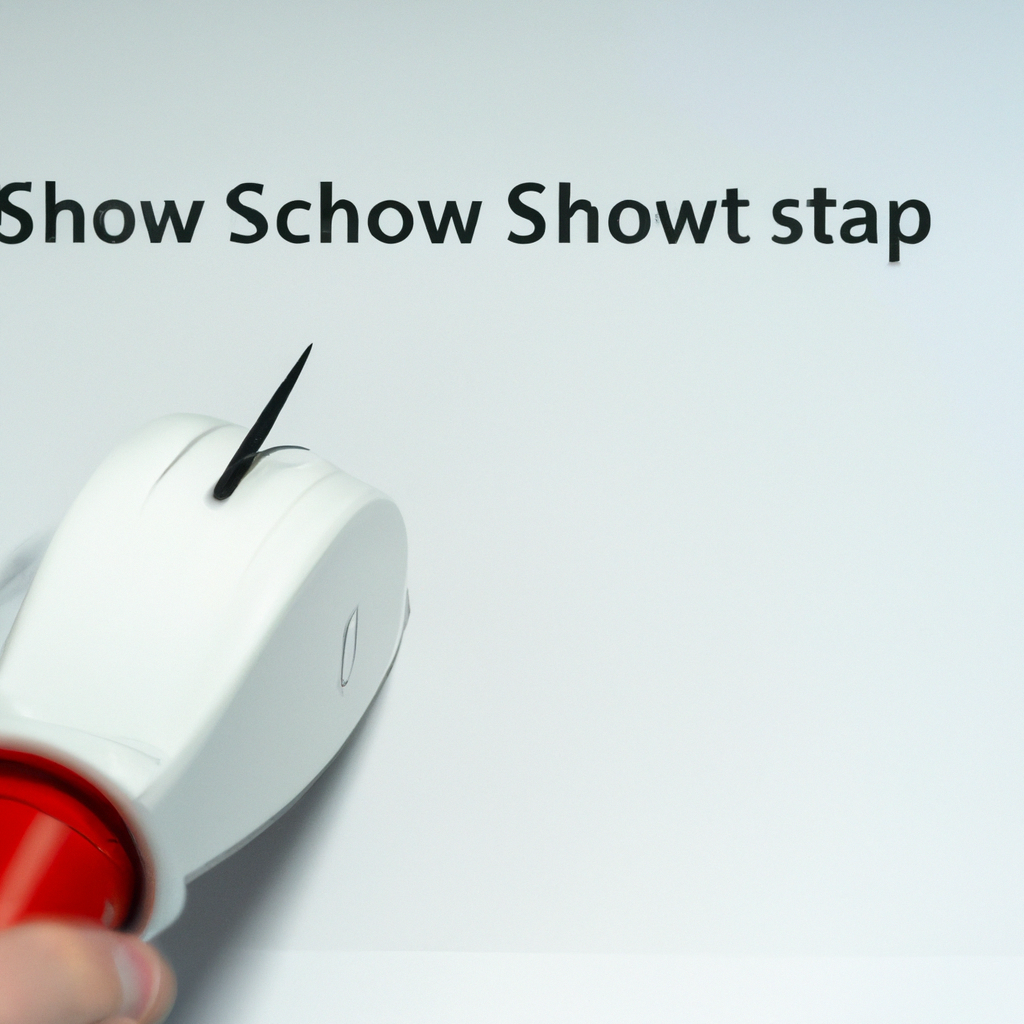
Checking and Adjusting the Height and Angle
Checking the Skid Shoes
When it comes to calibrating your snowblower for optimum performance, one of the first things you’ll want to do is check the skid shoes. These are the adjustable plates located on the bottom of the snowblower that determine the height at which the machine operates.
To check the skid shoes, start by turning off the snowblower and allowing the engine to cool down. Then, visually inspect the skid shoes for any signs of wear or damage. If the skid shoes are worn down or uneven, it may be time to replace them.
Adjusting the Skid Shoes
If the skid shoes are in good condition but need adjustment, you can easily do this to ensure proper snowblower performance. First, locate the adjustment mechanism for the skid shoes, which is typically found on the sides of the snowblower.
To adjust the skid shoes, loosen the adjustment mechanism and raise or lower the shoes until they are at the desired height. It’s important to note that the height of the skid shoes should be set according to the surface you’ll be clearing. For example, if you’re clearing a gravel driveway, the skid shoes should be set to a higher position to avoid damaging the surface.
Checking the Scraper Blade
The next step in calibrating your snowblower is to check the scraper blade. This is the rubber or metal strip located at the bottom of the snowblower that comes into contact with the ground. The scraper blade helps remove snow from the surface as the snowblower moves forward.
Inspect the scraper blade for any signs of wear or damage. If the scraper blade is damaged, it should be replaced to ensure optimal performance. Additionally, check the alignment of the scraper blade to make sure it is parallel to the ground.
Adjusting the Scraper Blade
If the scraper blade is in good condition but needs adjustment, you can make the necessary changes to ensure proper operation. To adjust the scraper blade, locate the adjustment mechanism usually found near the bottom of the snowblower.
Loosen the adjustment mechanism and raise or lower the scraper blade until it is at the desired height. Keep in mind that the scraper blade should be set low enough to effectively remove snow, but not so low that it scrapes the surface below, causing damage.
Checking the Auger Height
The auger is the rotating mechanism on the front of the snowblower that collects and moves the snow into the discharge chute. To calibrate your snowblower for optimum performance, it’s important to check the height of the auger.
Visually inspect the auger to ensure it is aligned properly and not making contact with the ground. Look for any signs of wear or damage, such as bent or broken blades. If you notice any issues with the auger, it may need to be repaired or replaced.
Adjusting the Auger Height
To adjust the height of the auger, locate the adjustment mechanism near the back of the snowblower. Loosen the mechanism and raise or lower the auger until it is at the desired height. The height of the auger should be set based on the depth of the snow you’ll be clearing.
Keep in mind that setting the auger too low can cause it to make contact with the ground, leading to damage. On the other hand, if the auger is set too high, it may not effectively collect and move the snow.
Checking the Chute Angle
The chute angle determines the direction in which the snow is discharged from the snowblower. To ensure optimal performance, it’s important to check the chute angle and make any necessary adjustments.
Inspect the chute to ensure it is aligned properly and not clogged with snow or debris. Ensure that the chute rotates smoothly and is not loose or damaged. If there are any issues with the chute, they should be addressed before operating the snowblower.
Adjusting the Chute Angle
To adjust the chute angle, locate the adjustment mechanism near the chute. This mechanism allows you to change the angle at which the snow is discharged. Loosen the adjustment mechanism and rotate the chute to the desired angle.
It’s important to note that the chute angle should be adjusted based on the direction you want the snow to be thrown. Consider factors such as wind direction and the area you want to clear when setting the chute angle.
Inspecting and Replacing the Belts
Locating the Belts
In order to calibrate your snowblower for optimum performance, it’s necessary to inspect the belts and replace them if needed. The belts are an essential component in the operation of the snowblower, as they transfer power from the engine to the auger and impeller.
To locate the belts, refer to your snowblower’s user manual. It will provide instructions on accessing the belt compartment and identifying the different belts used in your specific model.
Inspecting the Belts for Wear
Once you’ve located the belts, it’s important to visually inspect them for any signs of wear or damage. Look for fraying, cracks, or any other visible signs of deterioration. Additionally, check for proper tension in the belts. Over time, belts may become loose, which can negatively impact the snowblower’s performance.
If you notice any significant wear or damage, it’s recommended to replace the belts to ensure optimal performance and prevent unexpected breakdowns during use.
Replacing the Belts
If inspection reveals that the belts need to be replaced, it’s important to follow the manufacturer’s guidelines outlined in the user manual. These guidelines will provide step-by-step instructions on how to safely remove the old belts and install new ones.
When replacing the belts, be sure to use the correct size and type specified by the manufacturer. Using the wrong belts can lead to equipment failure and potential safety hazards. If you’re unsure about the proper size or type of belt, consult a professional or contact the manufacturer for assistance.
Inspecting and Cleaning the Fuel System
Checking the Fuel Tank
To calibrate your snowblower for optimum performance, it’s essential to inspect and maintain the fuel system. Begin by checking the fuel tank for any signs of damage or leaks. Pay attention to the fuel tank cap, ensuring it is tightly sealed and free from cracks or corrosion.
Inspect the fuel lines connecting the tank to the engine for any visible signs of wear, such as cracks or leaks. If you notice any issues with the fuel tank or lines, it’s crucial to address them before operating the snowblower to prevent fuel leaks and potential fire hazards.
Inspecting the Fuel Line
In addition to checking the fuel tank, inspect the fuel line itself for any signs of damage or blockage. A clogged or damaged fuel line can interfere with the flow of fuel to the engine, leading to poor performance or engine failure.
Carefully examine the fuel line for any visible signs of wear, such as cracks, leaks, or brittleness. If you notice any issues, it’s important to replace the fuel line to ensure proper fuel delivery.
Cleaning the Carburetor
The carburetor plays a crucial role in the fuel system of your snowblower, as it mixes the fuel and air before sending it into the engine. Over time, debris, dirt, and stale fuel can accumulate in the carburetor, leading to poor performance or engine malfunctions.
To clean the carburetor, refer to the user manual for specific instructions on your snowblower model. Generally, the process involves removing the carburetor, disassembling it, and thoroughly cleaning each component with carburetor cleaner. Once cleaned, reassemble the carburetor and reinstall it according to the manufacturer’s guidelines.
Adjusting the Carburetor
In addition to cleaning, it may be necessary to adjust the carburetor to optimize fuel and air mixture for proper engine performance. However, it’s important to note that carburetor adjustments can be complex and may require specific tools and expertise.
If you’re unsure about adjusting the carburetor, it’s best to seek professional assistance or consult the user manual. Improper adjustments can lead to engine damage, poor fuel efficiency, and potentially hazardous operating conditions.
Checking and Changing the Spark Plug
Locating the Spark Plug
To ensure optimal performance of your snowblower, it’s important to check and change the spark plug as needed. The spark plug is responsible for igniting the fuel-air mixture within the engine’s combustion chamber.
To locate the spark plug, refer to your snowblower’s user manual. It will provide specific instructions on accessing the spark plug, which is usually positioned on the side or top of the engine.
Removing the Spark Plug
Before removing the spark plug, make sure the engine is turned off and has had time to cool down. This will prevent any potential injuries due to hot components.
Using a spark plug socket wrench, carefully remove the spark plug by turning it counterclockwise. Be cautious not to damage the spark plug or surrounding components during removal.
Inspecting the Spark Plug
Once the spark plug is removed, visually inspect it for any signs of wear or damage. Look for deposits, such as carbon buildup or oil fouling, on the electrodes or insulator.
If the spark plug appears dirty or worn, it’s recommended to clean it with a wire brush or replace it with a new one. A worn or dirty spark plug can result in starting issues, poor fuel efficiency, and reduced engine performance.
Replacing the Spark Plug
If inspection reveals that the spark plug needs to be replaced, it’s important to use the correct type and heat range as specified by the manufacturer. Consult the user manual or contact a professional if you’re unsure about the proper spark plug for your snowblower model.
To install the new spark plug, carefully thread it into the spark plug hole by hand. Once hand-tightened, use the spark plug socket wrench to give it a final turn, ensuring a snug fit without overtightening.

Checking and Changing the Engine Oil
Locating the Oil Cap and Drain Plug
Regular maintenance of the engine oil is crucial for optimal performance and longevity of your snowblower. Engine oil lubricates the internal components, reducing friction and preventing excessive wear.
To locate the oil cap and drain plug, refer to your snowblower’s user manual. It will provide specific instructions on accessing these components, which are typically located on the side or bottom of the engine.
Checking the Oil Level
Before checking the oil level, make sure the engine is turned off and has had time to cool down. This will ensure accurate oil level readings and prevent any potential injuries.
Remove the oil cap and wipe the dipstick clean with a cloth or paper towel. Reinsert the dipstick fully and remove it again to check the oil level. The dipstick should have markings indicating the proper oil level range. If the oil level is below the recommended range, additional oil should be added.
Changing the Engine Oil
Routine oil changes are necessary to maintain the performance and longevity of your snowblower. Consult your snowblower’s user manual for specific instructions on the oil change procedure, as it may vary depending on the model.
Typically, the process involves draining the old oil by removing the drain plug and allowing it to flow into a suitable container. Once the oil has drained completely, reinstall the drain plug and refill the engine with the recommended type and amount of oil.
Dispose of the old oil properly by taking it to a recycling facility or an authorized collection point that accepts used motor oil.
Inspecting and Lubricating the Moving Parts
Inspecting the Auger
Regular inspection of the moving parts, such as the auger, is essential for maintaining the performance and safety of your snowblower. The auger is responsible for collecting and moving the snow into the discharge chute.
Visually inspect the auger for any signs of damage or excessive wear. Look for bent or broken blades, loose components, or abnormal noises during operation. If you notice any issues with the auger, they should be addressed promptly to prevent further damage or potential safety hazards.
Lubricating the Auger
Proper lubrication of the auger ensures smooth operation and reduces friction between moving parts. Consult your snowblower’s user manual for specific instructions on the lubrication requirements, as they may vary based on the model.
Typically, a suitable lubricant, such as lithium grease, is applied to designated areas of the auger and its components. It’s important to use the correct type and amount of lubricant specified by the manufacturer. Applying too much or the wrong type of lubricant can lead to equipment damage or performance issues.
Inspecting the Impeller
Similar to the auger, the impeller is responsible for collecting and moving the snow through the discharge chute. Regular inspection of the impeller is necessary to ensure proper operation and prevent clogs or malfunctions.
Visually inspect the impeller for any signs of damage or debris accumulation. Check for bent or broken blades, loose components, or obstructions within the impeller housing. If you notice any issues with the impeller, address them promptly to maintain optimal snowblower performance.
Lubricating the Impeller
Proper lubrication of the impeller is crucial for reducing friction and ensuring smooth operation. Refer to your snowblower’s user manual for specific instructions on lubricating the impeller, as it may vary depending on the model.
Apply the recommended lubricant to the designated areas of the impeller and its components. Be sure to use the correct type and amount of lubricant specified by the manufacturer. Incorrect lubrication can cause damage to the impeller or impede its performance.
Inspecting the Cables
The cables on your snowblower play a crucial role in controlling the various functions, such as engaging the auger or adjusting the chute. Regular inspection of the cables is necessary to ensure they are in good condition and properly connected.
Visually inspect the cables for any signs of wear, fraying, or damage. Check for proper tension and ensure that the cables are securely fastened. Replace any damaged or worn cables to maintain precise control of your snowblower.
Lubricating the Cables
Proper lubrication of the cables allows for smooth operation and reduces the risk of binding or seizing. Consult your snowblower’s user manual for specific instructions on lubricating the cables, as it may vary based on the model.
Using a suitable cable lubricant, apply a small amount to the moving points of the cables. Work the lubricant into the cables by manually operating the controls multiple times. Be cautious not to apply excessive lubricant, as it can attract dirt and debris, potentially causing damage.
Inspecting and Adjusting the Tires
Checking the Tire Pressure
The tires of your snowblower play a critical role in its overall performance and maneuverability. Regularly checking the tire pressure is essential to ensure optimal operation on different surfaces and in various weather conditions.
Consult your snowblower’s user manual for the recommended tire pressure, as it may vary depending on the model. Use a tire pressure gauge to measure the existing pressure in each tire. Adjust the pressure as necessary, using an air compressor or by adding or releasing air.
Adjusting the Tire Pressure
To adjust the tire pressure, refer to the recommended pressure provided in your snowblower’s user manual. If the current tire pressure is too high, release air by removing the valve stem cap and gently pressing the valve stem with a small tool or the tip of a tire pressure gauge.
If the current tire pressure is too low, use an air compressor to add air until the desired pressure is reached. Avoid overinflating the tires, as it can negatively impact performance and may cause tire damage.
Checking the Tire Tread
The tread on your snowblower’s tires provides traction and helps maintain stability while operating on different surfaces. Regularly inspecting the tire tread is essential to ensure adequate grip and prevent slipping on icy or slippery terrain.
Visually inspect the tire tread for any signs of excessive wear or unevenness. Check for worn or missing tread elements, as well as any visible signs of damage. If the tread is severely worn or damaged, it’s recommended to replace the tires to maintain safe and efficient snowblower operation.
Adjusting the Tire Tread
Unlike vehicle tires, snowblower tires generally do not have adjustable treads. If the tire tread is worn or damaged beyond repair, replacing the tires with new ones designed for your specific snowblower model is the best solution.
It’s important to use the correct tire size and type as specified by the manufacturer. Using improper tires can affect the snowblower’s performance, stability, and overall safety.
Inspecting and Testing the Electric Start
Checking the Battery
If your snowblower is equipped with an electric start feature, regular maintenance and inspection of the battery are crucial to ensure reliable operation during cold weather conditions. A weak or faulty battery can lead to starting issues and inconvenience when you need to clear snow.
Inspect the battery for any signs of damage, corrosion, or leakage. Check the battery connections to ensure they are secure and free from rust or debris. It’s also important to measure the battery voltage using a multimeter to determine its overall health.
If the battery shows signs of deterioration or has a low voltage reading, it may need to be charged or replaced to ensure proper functioning of the electric start feature.
Inspecting the Starter Motor
The starter motor is responsible for cranking the engine during the starting process, enabling the snowblower to operate. Regular inspection of the starter motor is essential to ensure it is in good condition and functions as intended.
Visually inspect the starter motor for any signs of damage, such as broken or worn-out components. Check the connections to ensure they are secure and free from corrosion.
If you notice any issues with the starter motor, it’s recommended to seek professional assistance or contact the manufacturer for further guidance. Repairing or replacing the starter motor requires expertise and specific tools.
Testing the Electric Start
Before the winter season begins, it’s crucial to test the electric start feature of your snowblower to ensure it’s in working order. This will prevent any unwelcome surprises when you need to start the snowblower during freezing temperatures.
Follow the user manual’s instructions on operating the electric start feature. Typically, this involves connecting the snowblower to a power source, such as an electrical outlet, and engaging the electric start button or switch.
Observe the snowblower’s response when using the electric start. If the engine starts smoothly and without any issues, the electric start is functioning properly. However, if the engine fails to start or experiences any irregularities, further troubleshooting or professional assistance may be necessary.
Cleaning and Storing the Snowblower
Removing Debris and Snow Build-up
Once you’ve completed the necessary inspections and maintenance tasks, it’s important to clean the snowblower to remove any debris or snow build-up. This is especially important before storing the snowblower for an extended period.
Start by turning off the snowblower and allowing the engine to cool down. Remove any snow or ice accumulation on the exterior using a brush or shovel. Pay close attention to the auger and discharge chute, ensuring they are clear of any debris.
Inspect the engine and other components for any traces of debris or oil leaks. If necessary, use a cloth or brush to remove any dirt or grime. Taking the time to clean your snowblower will help maintain its performance and prevent rust or corrosion.
Cleaning the Snowblower
To clean the snowblower more thoroughly, start by disconnecting the spark plug wire from the spark plug. This will prevent accidental engine starts during the cleaning process.
Using a garden hose or pressure washer set to a low pressure setting, carefully rinse off any visible dirt or debris from the snowblower. Avoid spraying directly into the engine or electrical components to prevent damage. Pay attention to hard-to-reach areas and ensure all parts are thoroughly rinsed.
After rinsing, scrub any remaining stains or stubborn dirt with a brush and a mild detergent or snowblower cleaner. Rinse thoroughly once again, ensuring all cleaning solutions are removed.
Allow the snowblower to dry completely before moving on to the next step.
Storing the Snowblower
Proper storage of your snowblower during the off-season is essential to maintain its performance and prevent damage. Follow these steps to store your snowblower safely:
-
Drain the fuel tank: If you won’t be using the snowblower for an extended period, it’s recommended to drain the fuel tank completely to prevent stale fuel from causing starting issues or engine damage. Consult the user manual for specific instructions on fuel draining.
-
Remove the spark plug: Remove the spark plug and apply a small amount of oil into the cylinder through the spark plug hole. Gently pull the starter cord a few times to distribute the oil evenly inside the cylinder. This will help prevent rust and ensure smooth engine operation when you’re ready to use the snowblower again.
-
Clean and lubricate moving parts: Apply a thin layer of lubricant to the auger, impeller, and other moving parts to prevent rust and ensure smooth operation. Wipe off any excess lubricant to avoid attracting dirt and debris.
-
Store in a dry and secure location: Find a clean and dry storage space to keep your snowblower protected from the elements. Ideally, store it in a covered area, such as a garage or shed, to prevent exposure to moisture and precipitation. If possible, elevate the snowblower off the ground to minimize contact with damp surfaces.
By following these storage guidelines, you can extend the lifespan of your snowblower and be prepared for the next winter season.
Tips and Precautions
Start with the User Manual
When calibrating and maintaining your snowblower, always refer to the user manual provided by the manufacturer. The user manual contains specific instructions and guidelines for your snowblower model, ensuring that you perform the necessary tasks correctly and safely.
Wear Protective Gear
Ensure your safety by wearing appropriate protective gear when operating or performing maintenance on your snowblower. This includes sturdy gloves, eye protection, and non-slip footwear. Additionally, consider wearing hearing protection if your snowblower generates a high level of noise.
Perform Regular Maintenance
Regular maintenance is crucial for keeping your snowblower in optimal condition. Follow the manufacturer’s recommended maintenance schedule, including tasks such as oil changes, filter replacements, and inspections. By staying on top of maintenance, you can prevent unexpected breakdowns and ensure your snowblower operates at its best.
Keep an Eye on Warning Signs
Be attentive to warning signs that indicate potential issues with your snowblower. These may include unusual noises, excessive vibration, poor performance, or difficulty starting. Address any warning signs promptly, as they often indicate the need for maintenance or repairs.
Seek Professional Help if Needed
If you’re unsure about any part of the calibration or maintenance process, it’s always best to seek professional assistance. Don’t hesitate to contact the manufacturer’s customer service or consult a certified technician who specializes in snowblower repairs. They can provide guidance and ensure the proper servicing of your snowblower.
Calibrating your snowblower for optimum performance is a comprehensive process that requires attention to detail and periodic maintenance. By following these guidelines and performing the necessary inspections and adjustments, you can ensure that your snowblower is ready to tackle snow removal efficiently and reliably.




